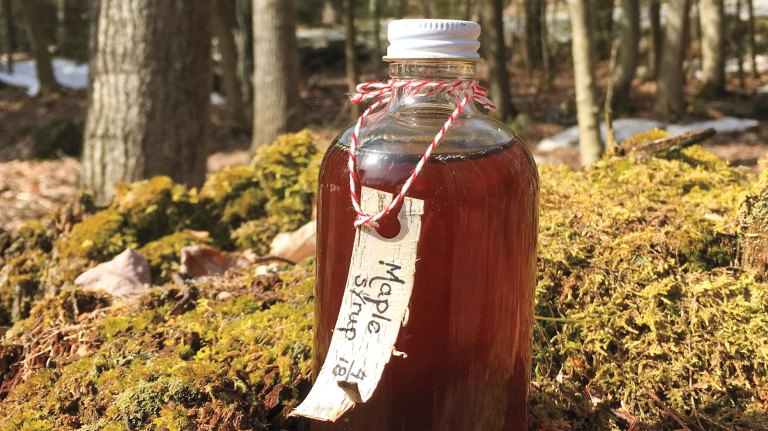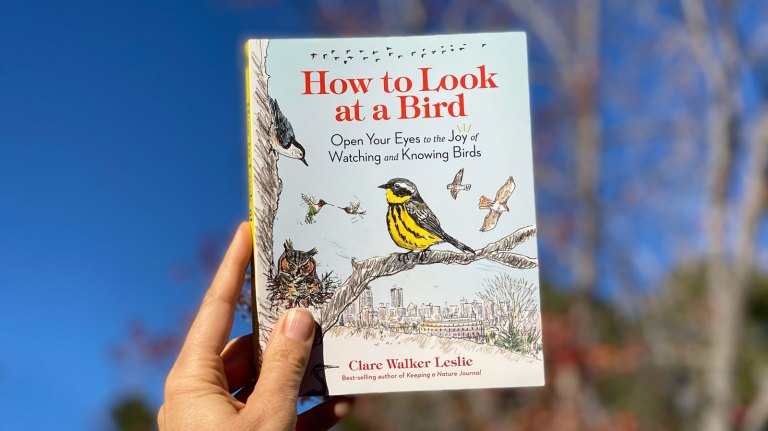The Nature of Natural: What We See in the Upside-Down Trees
The art installation outside of Storey’s offices has been in place since 1999 and continues to generate strong feelings in those of us who pass it every day.
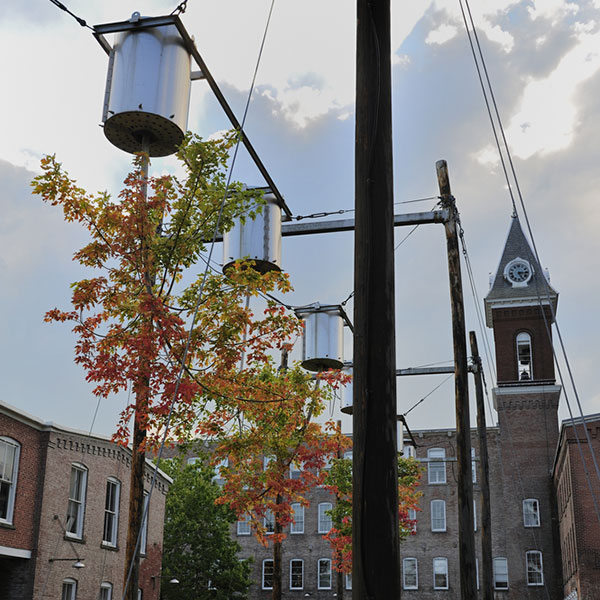
Picture this: six maple trees hanging upside down over your head, an inverted reality strung up over a stretch of green grass in a sea of pavement and industrial buildings. If you’ve ever been to the Storey offices or visited the Massachusetts Museum of Contemporary Art (MASS MoCA) in North Adams, you’ve seen them. They’re a long-term art exhibit called Tree Logic, and they’re impossible to miss.
Working at Storey, we pass these trees every day. We see them as they’re getting drinks from their built-in irrigation system, we see their leaves turn red and drop in the fall, and on winter nights we see the naked tree forms lit by jewel-toned lights. In the spring, their limbs are covered with red buds, as they are at the moment I write this. There are other plants — grasses and weeds — sprouting skyward from the bottom (or rather, top?) of the trees’ planters. Birds sit and sing in the branches.
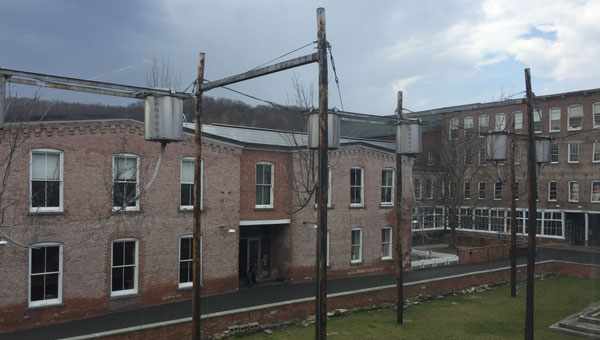
And passing the trees every day means it’s hard not to have some kind of response to them, as I learned when informally polling my coworkers about what the upside-down trees make them feel. Of the more than 30 people who responded — more than 50 percent of our staff! — there were two who said they liked the trees (three, if “I don’t really mind them” counts as a like). A few see the trees as a daily reminder “to look at everything from a different angle” or that “everything that lives eventually grows up.”
For some of us, the trees inspire thoughts of ancient conflict (“man vs. nature”) or stir intense internal debates about ethics and the intersection of art and science (as one colleague described it, this is the “vegetal equivalent of finding animals in a cosmetics testing lab”).
We also can’t resist imbuing the trees with human qualities. An overwhelming majority of the answers from my coworkers contained expressions of discomfort. “Torture,” “unnatural,” “weird,” and “bizarre” were frequently used words. We pity the trees and think they “look sad” and unhealthy. We go so far as to believe the trees have preferences and their own sense of dignity. “They’d much rather be growing tall and proud in the ground,” said one coworker.
This phenomenon of humanizing the trees is part of what the exhibit’s creator, Natalie Jeremijenko, intended. The installation’s description on the MASS MoCA website notes that “when inverted, the six trees in this experiment still grow away from the earth and towards the sun — so the natural predisposition of trees might well produce the most unnatural shapes over time, raising questions about what the nature of the natural is.”
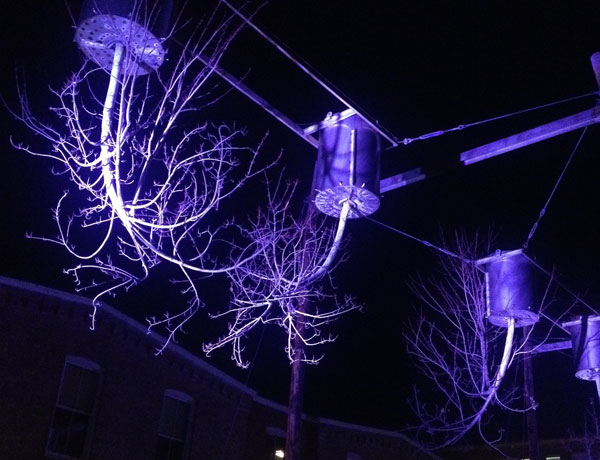
We are in a better position than most to observe the trees’ changes over time. So does our vantage point allow our feelings to evolve with the trees? Yes, sometimes.
“I used to call it the tree torture, but over time I see it more that the trees are going to reach for what they want/need, even if you turn their world upside down,” says one. A handful see the trees as symbols of strength, resiliency, determination, and mystery — an embodiment of the life force. “The strange ways they compensate for being upside-down is amazing, and they always signal the changing seasons before other trees,” writes one Storey-ite. From another, a response in verse:
Trees transpire, aspire,
inspire; reaching for the sun
wherever it may be.
Does seeing the trees every day make our responses any different than that of, say, an out-of-town museum-goer who sees them one day out of the year? I haven’t polled the strangers walking past our offices. I do know that people stop, stare, and then walk around the display with eyes gazing up. They point and talk to the people next to them. They laugh or shake their heads. They almost always take photos.
“Whoever would have thought the old mill building would be saved and resurrected into a modern art museum with upside-down trees that visitors never tire of?” one colleague wrote to me yesterday. On Earth Day, of all days, it’s worth thinking about the power of the upside-down trees. If poll results and stranger observations tell me anything, it’s that the trees are irrefutable evidence that our actions have an impact on the world around us. How we feel about that impact when faced with it, and what we do with the knowledge, is up to us.
A final note: Several of my colleagues noted that their feelings about the upside-down trees softened a bit, after learning that an earlier set of them had been removed from the exhibit and planted in a field behind the Clark Art Institute in neighboring Williamstown. There the trees now thrive — fully upright.



